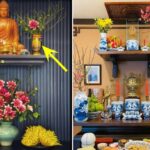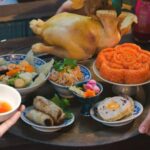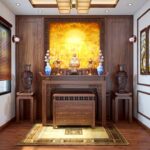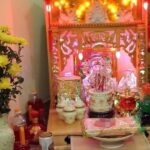Ancestor worship is a deeply important custom in Vietnamese culture. Most families have an ancestor altar in their homes. On special occasions such as the 1st and 15th days of the lunar month, Tet holiday, or death anniversaries, offerings of fresh fruit and incense are made to show reverence to one’s ancestors. Ancestor worship is not only about remembering one’s roots but also has feng shui implications, bringing prosperity and peace to the family.
In addition to offerings like incense and flowers, the placement of the deceased’s photographs is also important. There are certain rules to follow when setting up these photos, which not everyone may be aware of.
**Not Following the Rule of ‘Male on the Left, Female on the Right’**
One crucial rule to remember is the “male on the left, female on the right” principle when arranging ancestral photos. This means the photo of the male ancestor should be placed on the left, and the female ancestor on the right. In traditional belief, this arrangement reflects the natural order and the activities within the human body.
Specifically, when facing south, the sun rises on the left and sets on the right. Males are associated with blood, and in the morning, when the liver energy is strong, the blood surges. Conversely, females are linked to the kidneys and exhibit strength in the afternoon. This forms the basis of the concept of “male on the left, female on the right,” with other associations like “male yang, female yin,” “male blood, female qi,” and “male liver, female kidneys.”
Additionally, placing the female ancestor’s photo on the right side of the male also symbolizes the important role of women as the right-hand support of their husbands in raising their children.
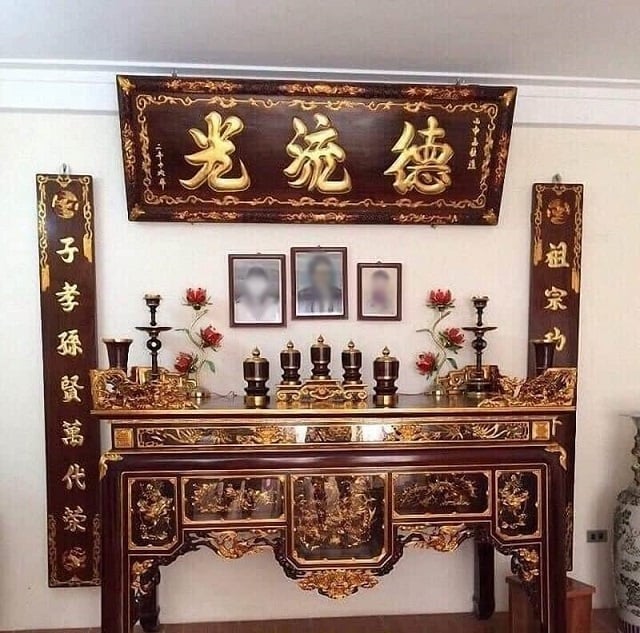
The arrangement of ancestral photos follows the rule of ‘male on the left, female on the right.’
**Not Keeping the Photos Straight and Tidy**
According to folk beliefs, ancestral photos are not just images but also serve as a means for the deceased to locate their position on the altar. When the photos are tilted or misaligned, it can be seen as disrespectful and irreverent in ancestor worship and remembrance. Many believe that this can lead to reprimands and difficulties in the life of the householder.
**Using Individual Photos for Ancestral Worship**
It is recommended to use individual photos for ancestral worship rather than group photos. Regardless of the bond between the deceased couple, using separate photos shows respect and honor.
Additionally, the photo frames should be uniform in size and style and should match the worship space to ensure harmony on the altar.
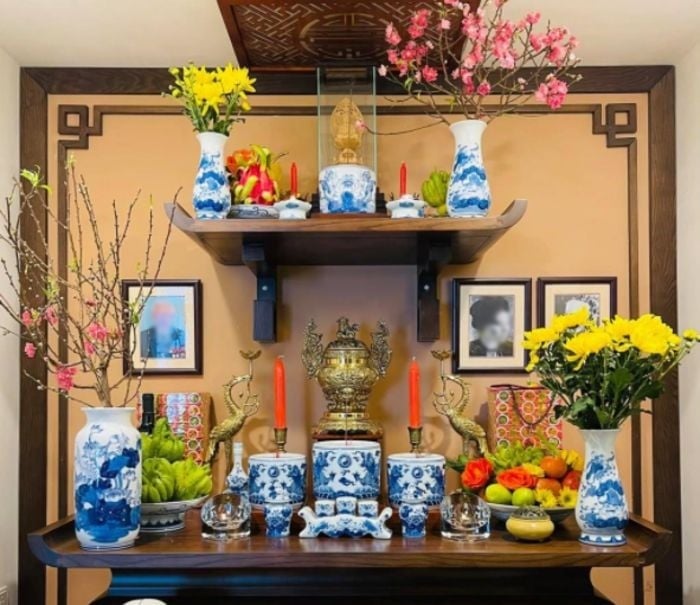
Individual photos are preferred for ancestral worship.
**Arranging Photos Based on Hierarchy**
The photos on the ancestor altar should be arranged according to the hierarchy of the deceased. The person with the highest status should be placed in the center and at a higher level, while those with lower status should be placed on either side, slightly lower. If there are many ancestors being worshipped, a three-tiered altar can be used to facilitate the arrangement of photos.
When combining ancestor worship with Buddhist worship, the photo or statue of Buddha should be placed in the center and at the highest point, followed by the ancestral photos. The photos of the deceased should be placed on either side of the Buddha’s image and slightly lower.
Is it Advisable to Combine Two Banana Bunches for Ancestral Worship?
The debate surrounding the use of two banana bunches on an altar during rituals is intriguing. Some individuals opt for this practice when a single large bunch is unavailable, while others frown upon it. The question arises: why the discrepancy in opinions? Is there an underlying cultural or religious significance that dictates the use of a single bunch, and if so, what are the implications of deviating from this tradition?

























